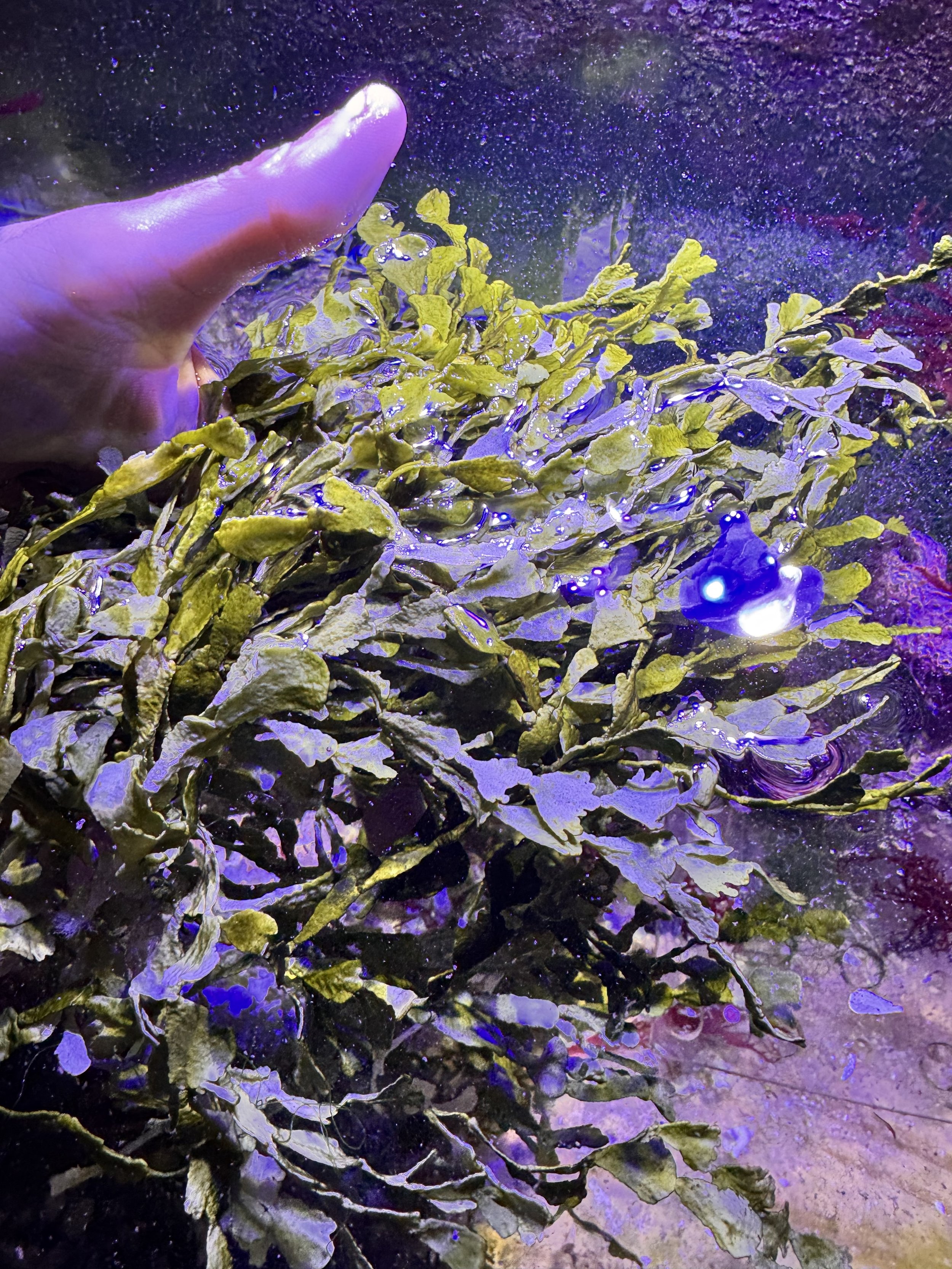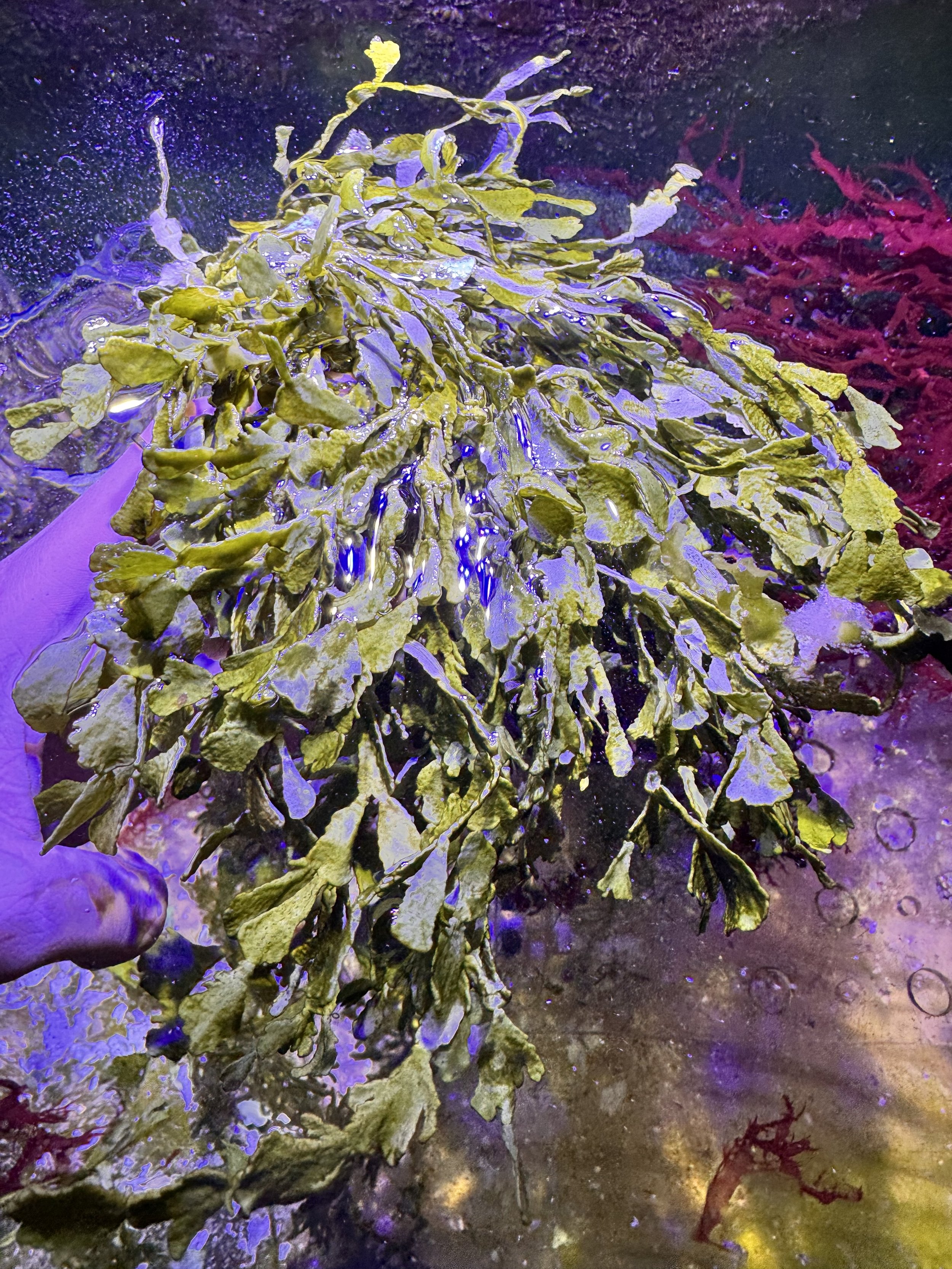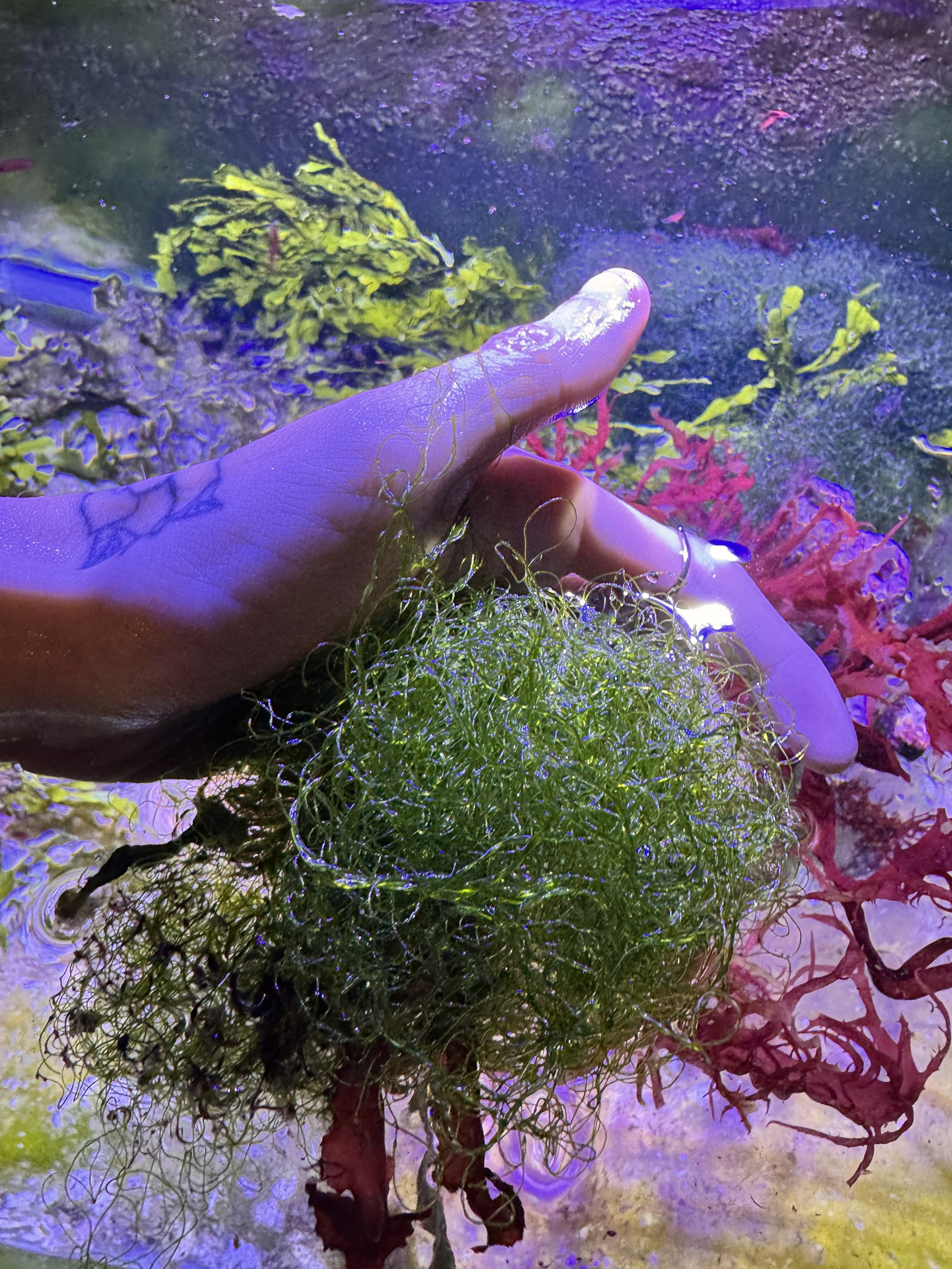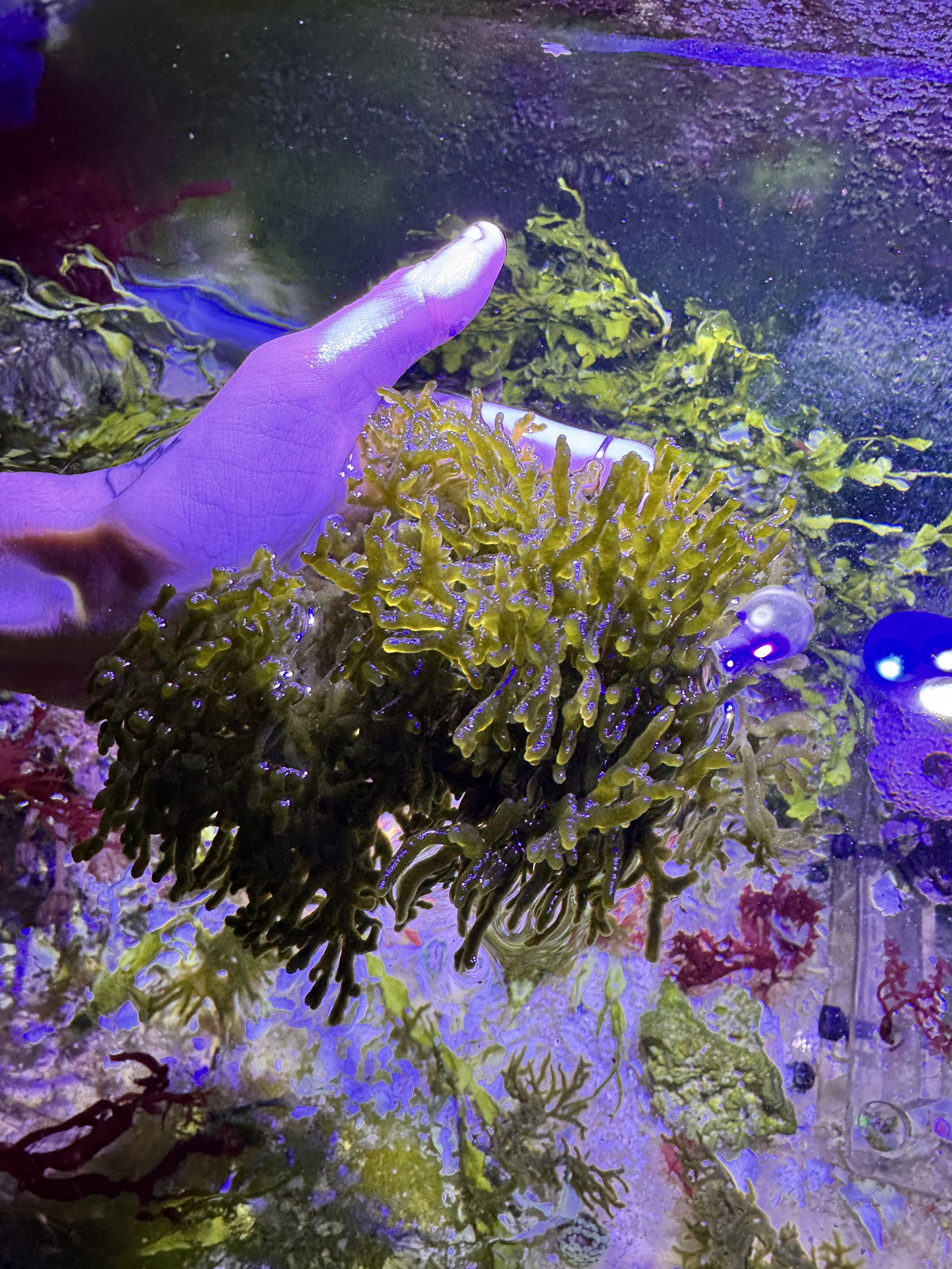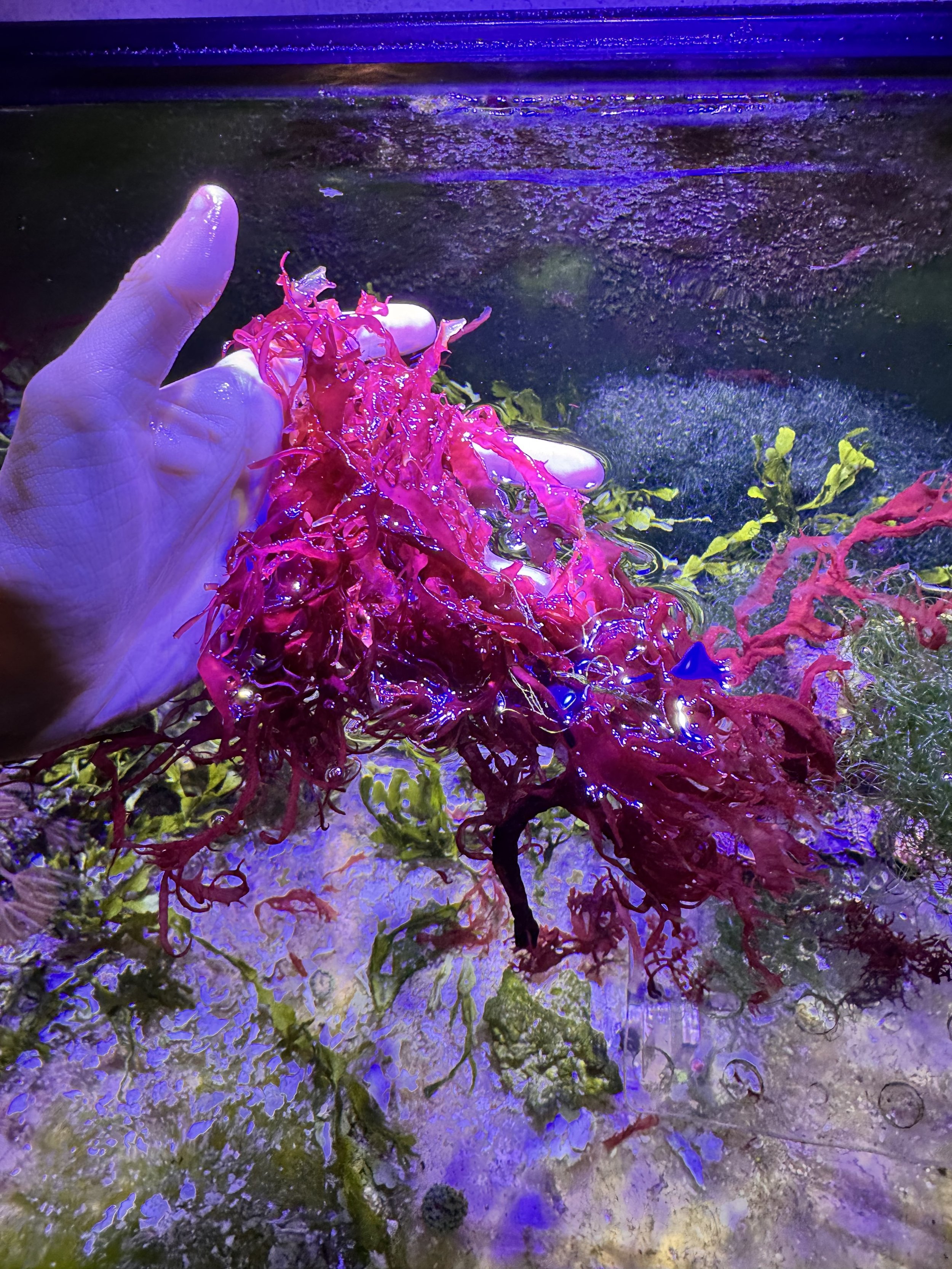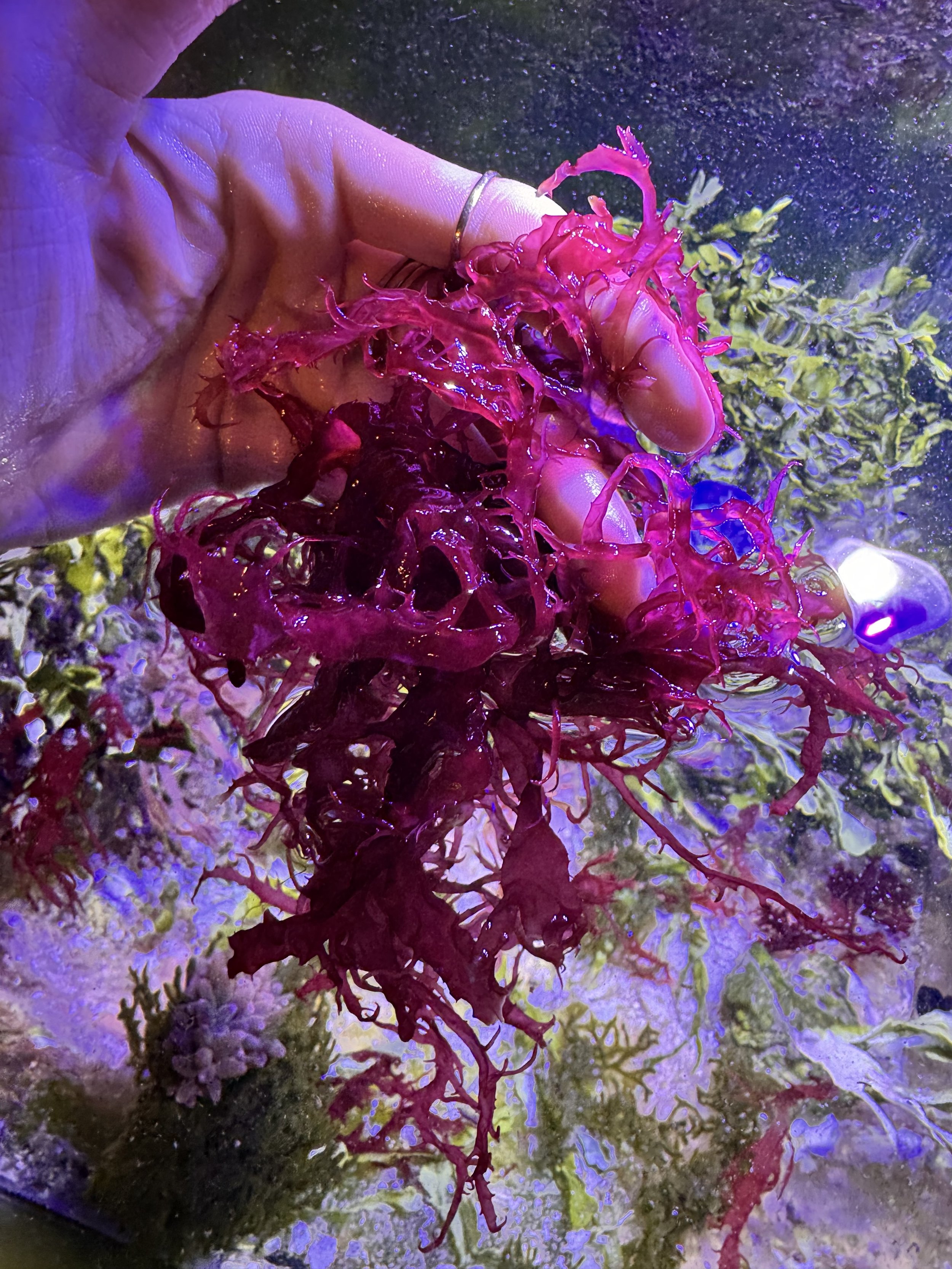Parameter Ideal Range
Temperature 72–78°F (22–26°C)
Salinity1.024–1.026
pH 8.1–8.4
Alkalinity 8–12 dKH
Nitrate 2–10 ppm
Phosphate 0.01–0.10 ppm
Calcium 420–460 ppm
Magnesium 1250–1350 ppm
⚠️ Halimeda is calcareous, meaning it requires stable calcium, alkalinity, and magnesium levels—similar to stony corals.
Sudden die-off (crash): Maintain stable parameters, prune carefully
pH drop from mass death: Don’t let it die off in large quantity
Pale segments: Check calcium, alk, and magnesium levels
Not growing: May need more nutrients or stronger light
📦 Acclimation
Temperature match for 15–30 minutes
Drip acclimate for 30–60 minutes to match salinity and pH
Rinse gently in tank water before adding to main display or refugium
Place onto a stable rock or substrate area with good light and flow
💡 Lighting
Moderate to high light (reef-quality LED or T5 lighting)
Will grow faster under stronger light, but not as dependent on intense PAR as some macros
Photoperiod: 8–12 hours/day
🌊 Flow Requirements
Moderate flow preferred
Needs enough movement to prevent detritus from settling on its blades
🪴 Placement
Prefers being attached to rockwork or rubble
Not a good candidate for tumbling or floating like Chaeto or Dragon’s Breath
Grows from a holdfast and spreads slowly in branching fashion
🍽️ Nutrient & Supplement Needs
Requires calcium and carbonate (alkalinity) to grow new segments
Benefits from iodine, iron, and trace elements
Will stall or “melt back” in tanks that are too clean or stripped of nutrients
✂️ Pruning & Maintenance
Remove decaying or pale parts gently (cut near base)
Prune only when necessary; slow grower
Watch for calcium swings or loss of new growth as a warning sign of imbalance
🔬 Compatibility
Reef-safe
Ignored by most herbivorous fish (e.g. tangs typically don’t eat Halimeda)
Safe with inverts and corals
Not invasive; doesn’t “take over” tanks
